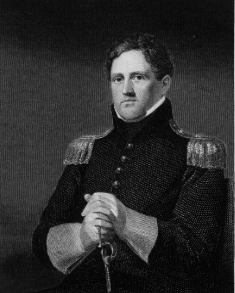Winner of the Spring 2018 StMU History Media Award for
Best Article in the Category of “Crime”
Article with the Best Introduction
In today’s society, we are taught at a young age to never speak to strangers without our parents around or by ourselves in general. However, in the late 1920s, it was a different time of danger and being more aggressive in hate crimes and violence. Sadly, those “norms” would erupt in a rise of terror and isolation within Brooklyn, New York. On February 11, 1927, two boys, Billy Gaffney and Billy Beaton, were having fun within their apartment, unsupervised. A few hours passed, both boys could not be found, until someone found Billy Beaton alone on the apartment roof. When asked where Billy Gaffney had gone, he responded with, “The boogey man took him.”1
This “boogey man” who took Billy Gaffney was indeed one’s worst nightmare. Calling him a man certainly does not do justice to the true monster that this “boogey man” Albert Fish was. At fifty-six years old, Albert Fish already had quite a life before that February day in 1927. He had been born on May 19, 1870 in Washington D.C. Originally named Hamilton Fish, Albert was the youngest of his three siblings. However, Fish had no clue as to who he would become. He was raised in a family whose members had mental health issues. His family was mostly illiterate, and to make matters worse, his own mother, when he was at the age of five, put him in an orphanage due to financial problems. Albert’s time in St. Johns Orphanage sparked a dangerous set of behaviors. He was frequently abused and beaten at the orphanage, but he soon developed something of an enjoyment of the feeling of physical pain, often giving him erections.1 In 1879, Albert’s mother was back on her feet financially and able to support Fish again. But Fish went from the abusive environment of the orphanage to a crowd of neighborhood youths who introduced the nine-year-old Fish to the practices of drinking urine, as well as to coprophagia (the act of eating feces or dung). He also started visiting public bath houses to watch young boys undress. Poor Fish’s mother had no idea that in her absence, her son was developing disturbing behaviors.
By 1890, twenty-year-old Fish had moved to New York City. In this part of Fish’s life, his behaviors escalated to rape, sodomy, and then to castration, mostly on male individuals of lower social status, such as African-American males and disadvantage males whom he believed would not be missed.3 He continued his acts of complete horror even after being arranged into a marriage in 1898 with his wife.4
During his marriage, he and his wife had six children together. He never abused his own children in any way, but he did became a house painter and usually targeted homes with young boys aged around six and continued with molestation and a morbid and horrid interest in castration.5 He was then incarcerated in 1903 for embezzlement, which then led to Fish regularly having sex with men in prison. However, his actions led to his divorce from his wife in 1917, who left him for a handyman named John Straube, and taking all of their children. That only made Fish become more sunk into a hole of obsession and terror.6 He began having morbid and frightening thoughts, and developing cravings such as cannibalism in which he enacted upon his victims in murdering them. Surprisingly, he had never been caught committing any of these murders, and if he were ever close to getting caught, he would flee the city. That is, up until Fish made a big mistake, which later helped solve the mysterious disappearance and murder of Billy Gaffney. This was possible through the unfortunately more famous case of the murder of a young girl, Grace Budd.

Grace Budd was an eleven-year-old girl who lived in a farmhouse with her brother, mother, and father. In a newspaper advertisement, Albert Fish found a man by the name of Edward Budd looking for a job. Fish then marked Edward Budd to be his next victim.7 Soon after, Fish responded to the newspaper ad by posing as a wealthy farmer named Frank Howard in need of help on his farm, and he began to be friendly with the Budd family.8 Fish’s plans, however, had switched after he discovered Edward Budd had a younger sister Grace, who seemed to be far more vulnerable than Edward had been. This is when Fish began to create a disgusting and horrible scheme to capture the young Grace Budd. Fish convinced the parents to let Grace accompany him to his sisters’ birthday party, which he completely fabricated.9 Fish took Grace and she never returned home after that day. Only after seven years, on November 11, 1934, were the details to what had happened to innocent Grace discovered. Fish sent a letter to the parents of Grace Budd detailing what he had done to her.8 To their horror, he confessed that he cooked parts of her to taste her flesh. He detailed her last moments, describing the torture and truly horrid acts Fish had committed upon her before Grace Budds’ final moments on earth. One would hope that Fish would end the letter on that horrifying and heart breaking note; however, he then described the process of preparing her body to feast upon, the parts of the body he had used, the taste of their daughters’ flesh and how he found her taste so satisfying. He then included at the end of the letter how he left her a virgin, as if that would lighten the terrible acts that he had committed on the young and innocent Grace Budd and her family.11
It was only through this tragic incident that justice came about for Albert Fish’s horrendous act of murder. Fish’s letter to the Budd family was just enough evidence to find and capture him. Detective William King helped track down and arrest Albert Fish using symbols on the stationary he used to write to the Budd family, “N.Y.P.C.B.A.” standing for “New York Private Chauffeur’s Benevolent Association.” King successfully located where it had come from, tracing it back to a room at 200 East 52nd Street from a janitor who had moved from there. This location was the exact place where Fish came frequently to receive his mail. Finally, this helped investigator William F. King pinpoint exactly where Albert Fish would be; waiting right outside of his room.12

Fish was captured and taken in for questioning. During questioning, Fish admitted to murdering Grace Budd and confessed to the investigators exactly where he had buried the remains of Grace Budd. They were able to locate Grace Budd’s bones, which were located behind Wisteria Cottage, an abandoned house in Westchester County. Fish then confessed to eating parts of Budd’s body, as well as to the murder of Billy Gaffney, including the torment he had done to Billy.8 After Fish’s arrest, he did not care for the consequences and looked very much forward to having his penalty be death. In March 1935, Fish pleaded sane but guilty.14 The court decided that he was sane, and accepted his plea of guilt.15.

Fish was executed on January 16, 1938 in the electric chair in Sing Sing Prison. Even to his death he continued his bizarre behavior, exclaiming that being electrocuted would be “the supreme thrill” of his life.9. Therefore, Albert Fish had never really suffered any consequences. Even to his death, Albert Fish took pleasure in his morbid thoughts and ultimately met the peak of his horrid obsession.
- Murderpedia: The Encyclopedia of Murderers, June 2017, s.v. “Albert Fish,” by Juan Ignacio Blanco. ↵
- Murderpedia: The Encyclopedia of Murderers, June 2017, s.v. “Albert Fish,” by Juan Ignacio Blanco. ↵
- Martin Fido, True Crime: The Infamous Villains of Modern History and Their Hideous Crimes (United Kingdom: Carlton Publishing Group, 2013), 186. ↵
- Murderpedia: The Encyclopedia of Murderers, June 2017, s.v. “Albert Fish,” by Juan Ignacio Blanco. ↵
- “Evil serial killer known as the Brooklyn Vampire who kidnapped children and cut them up and ATE them, known as the Gray Man and the Werewolf of Wisteria murderer Albert Fish was one of the most twisted serial killers,” Daily Mirror, The: Web Edition Articles (September 2017): 9. ↵
- Murderpedia: The Encyclopedia of Murderers, June 2017, s.v. “Albert Fish” by Juan Ignacio Blanco. ↵
- Murderpedia: The Encyclopedia of Murderers, June 2017, s.v. “Albert Fish,” by Juan Ignacio Blanco. ↵
- Salem Press Biographical Encyclopedia, 2017, s.v. “Albert Fish,” by Bernadette L. Bosky. ↵
- Murderpedia: The Encyclopedia of Murderers, June 2017, s.v. “Albert Fish” by Juan Ignacio Blanco. ↵
- Salem Press Biographical Encyclopedia, 2017, s.v. “Albert Fish,” by Bernadette L. Bosky. ↵
- Salem Press Biographical Encyclopedia, 2017, s.v. “Albert Fish,” by Bernadette L. Bosky. ↵
- Salem Press Biographical Encyclopedia, 2017, s.v. “Albert Fish,” by Bernadette L. Bosky. ↵
- Salem Press Biographical Encyclopedia, 2017, s.v. “Albert Fish,” by Bernadette L. Bosky. ↵
- Salem Press Biographical Encyclopedia, 2017, s.v. “Albert Fish,” by Bernadette L. Bosky. ↵
- Salem Press Encyclopedia of Science, 2013, s.v. “Irresistible impulse rule.” By Mario Morelli. ↵
- Murderpedia: The Encyclopedia of Murderers, June 2017, s.v. “Albert Fish” by Juan Ignacio Blanco. ↵



202 comments
Montserrat Moreno Ramirez
It’s more than obvious that his childhood influenced his behavior as an older man and my heart was literary racing with every word I read it’s just awful how a person is capable of doing all sorts of things in order to fulfill their needs. It’s absolutely shocking how a man could care less about his family that didn’t prevent him of any of those crimes. Great article!
Eloisa Sanchez Urrea
This is by far the most disturbing article I have read so far. It is evident that the author definitely did his research. She detailed the horrible acts this man committed in a way where we felt disturbed and a part of the story as well. It is overwhelming to believe that a man can be so mentally disturbed that he is driven to commit such horrid acts.
Greyson Addicott
Stories like these make me realize just how lucky we are to live in a society that uses modern technology to catch criminals before they become as deranged as Fish. Indeed, the times before DNA must have been horrible for any detective or policeman in the day. Indeed, I cannot understand how criminals were even caught at all. The ability to change location on whim with no trace makes the all but impossible to track down. The article was very well written, and it deserved every award it received!
Madeline Torres
It makes me absolutely sick to my stomach to think someone can do such horrible things to innocent people. It’s crazy how he never found it wrong or how he wasn’t phased by any of his crimes. This man found pleasure in all his wrong doings, he even found pleasure in his execution which is extremely rare and bizarre. It’s extremely heartbreaking how these poor children’s lives were taken from them, and they most definitely deserved the justice that was served. This article was very well put although gruesome as well and the details tied everything together perfectly.
Jasmine Rocha
The name Boogeyman does not fit the horrors that Fish had done. At first, as I was reading this it seemed that with a not so lucky background in where Fish grew up its normal to be a little crazy but I believe that this man was probably a psychopath of some sorts. He enjoyed doing the horrible things that he did and even had the great idea to send a letter. Which makes me wonder was it his intention to get caught and ultimately hoped on getting the death penalty. Was after all his exploring and tasting everything that he could be the taste of death the last thing on his bucket list. The article did a great job in engaging the reader to the story of a man who got the death penalty for his actions.
Stephanie Silvola
These type of articles are quite interesting to me. To see how Albert Fish acted upon such morbid acts, but was completely fine about it disgusts me. He has no remorse for what he has done and it may have been from how he grew up and how his upbringing caused him to do such horrible schemes. His death sentencing gave me the chills especially when he wasn’t even concerned, but instead was looking forward to it.
Jonathan Arreola
The gruesome acts of Albert fish boil my blood, I can not accept the truth that this actually happened. I pity the innocent children Fish assaulted, and the families who had to suffer through the horrible loss of their loved ones. After pensively analyzing the acts of Fish, however, I can not agree upon Fish being fully at fault or blaming the government for not yet having effective social and protective services to prevent this from happening altogether. Of course, my decision is to blame Fish 100%, but I wish there was something that could have prohibited the situation. At least I can be thankful that cases like this encouraged the development of social services and police forces. It is the reason we learn at a young age not to trust or talk to stranger and the cause of similar cases not reoccurring.
Daniel Linstead
These types of articles make you feel sick. To actually know that someone did things like this is horrible. It just seems to me that back in the old days it was easier to commit horrible crimes like he did and get away with it easier. You could just tell what type of sick man he was when he got sentenced to death he didn’t have a care in the world. Good article, did a good job of describing this horrible man.
Jennifer Salas
Throughout this whole article I kept thinking to myself “Theres no way this is real.” I was in complete shock when I read about all the murders and crimes he committed without getting caught. He had a rough upbringing and it makes me wonder at what point or what circumstance made him want to hurt people? My heart hurts for the children and the children’s family that he hurt. The fact that he wasn’t phased by being sentenced to death left with me chills. I hope that this never reoccurs.
Megan Copeland
This was a very disturbing story. I have never understood how people can do stuff like this, especially to kids. Reading this article was like watching an episode of criminal minds which is one of my favorite shows. This was a very informative article in that it walked us through his victims and how he got convicted. In my opinion, the punishment he got fit his crimes.